Common Deficiencies & Issues
Found In Homes On Vancouver Island
Clay Pipes
Clay pipes remain functional for approximately 50-60 years, but the quality and efficiency of the home’s plumbing may deteriorate over time. Most clay pipes were installed decades ago and are nearing their service life. Clay pipes are susceptible to breakage and cracking, often caused by vegetation roots becoming attached and damaging the pipes. Maintaining a functioning drainage system, and cleaning pipes regularly, contributes to the overall health of the perimeter drainage system. Advancements in plastic pipes, such as ABS and PVC, provide a more durable, reliable, and flexible option.
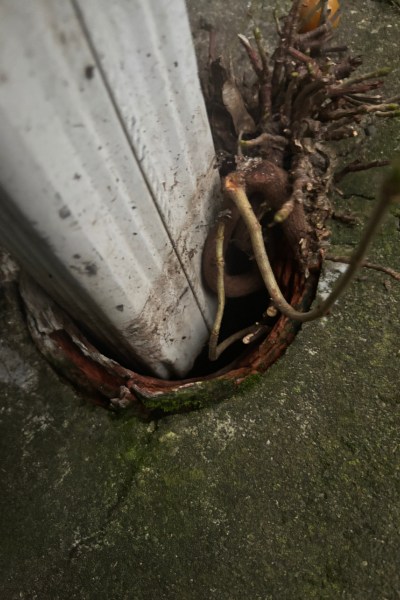
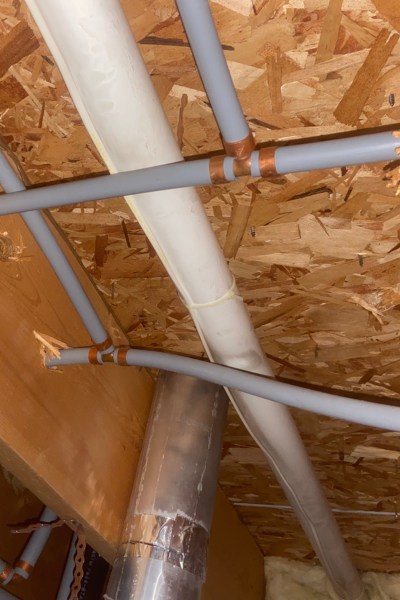
Poly B (Polybutylene) Pipes
Poly B Piping is susceptible to deterioration under high temperatures, degradation from chlorine exposure, and is prone to failure through improper installation procedures. Poly B was widely used in homes built in Canada from around 1985 – 1997 as a cheaper and more flexible alternative to copper piping. However, in today’s housing market, insurance companies are reluctant to insure homes that contain Poly B piping. In some instances, the type of fitting, ie. brass, is seen as satisfactory for initial insurance.
Aluminum Wiring
Aluminum wiring in a home is considered problematic primarily due to safety concerns. While it was commonly used in homes built between the 1960s and 1970s as a cheaper alternative to copper, it presents several issues, including increased fire risk, corrosion, poor conductivity, repair/upgrade difficulties, and insurance/resale issues. Always use a Qualified Electrician when working with aluminum wiring or other electrical issues/upgrades.
Aluminum wiring tends to expand and contract more than copper when it heats up. This movement can cause connections to loosen over time, leading to poor connections, increased resistance, and heat buildup. This can create a fire hazard, particularly at outlets, switches, and junction boxes where the wiring is connected.
Aluminum is more prone to oxidation and corrosion than copper, especially at connection points. This corrosion can degrade the quality of the electrical connection and further increase the risk of overheating and electrical failures.
Although aluminum is a good conductor, it doesn’t conduct as efficiently as copper. As a result, aluminum wiring can carry more electrical resistance, which can cause the wires to heat up under high loads, again contributing to potential fire hazards.
Aluminum wiring requires special handling when making repairs or upgrades. If a homeowner or electrician is not aware of the correct procedures for working with aluminum wiring, improper connections can be made, further increasing the risk of electrical fires.
Homes with aluminum wiring may have difficulty passing inspection or could face higher insurance premiums, due to the risks associated with this type of wiring. Some insurance companies may even refuse to cover homes with aluminum wiring unless it’s been upgraded to copper or a special connector has been installed.
While it’s not always necessary to completely rewire a home, if aluminum wiring is present, it’s important to have it evaluated by a licensed electrician. In some cases, adding special connectors (like COPALUM or AlumiConn connectors) can help reduce the risk of problems, but it’s always a good idea to ensure everything is in proper condition to maintain safety. Always use a Qualified Electrician.
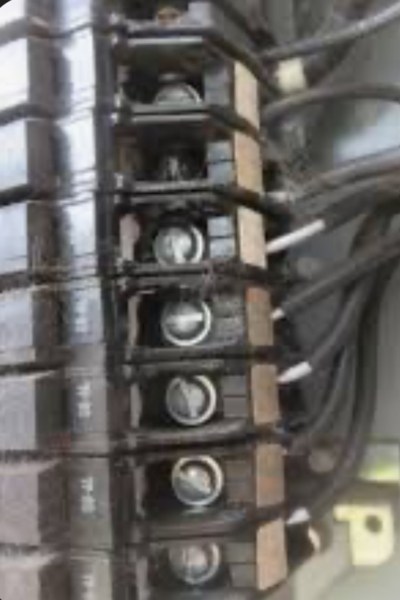
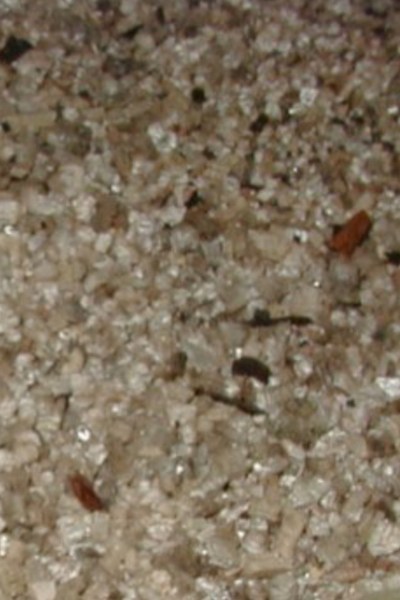
Asbestos
Asbestos is a group of naturally occurring mineral fibres found in rock. Until the 1990’s, many homes in Victoria used asbestos in their construction, including in insulation, plaster, floor, ceilings tiles, stucco, drywall, house siding, and more. Although it is no longer used in the building of homes, older homes may still contain this dangerous material. We often find asbestos wrapped around older hot water pipes, used to tape together sections of heating ducts, or in flooring or ceiling materials.
When left undisturbed, asbestos may not be seen as a risk to your health; however, once asbestos fibres are released into the air, you risk breathing in the fibres. Regular or prolonged exposure can lead to a variety of diseases, including lung cancer. Tests show that removing asbestos from older buildings can increase the risk of exposure and amount of asbestos fibres in the air if proper precautions aren’t followed. In any home that we suspect may contain asbestos, we strongly recommend having the material tested by a professional before doing any renovations or work on the home, and using a qualified contractor to remove the asbestos.
To find a professional who can test a sample for asbestos, visit www.nrs.gov.bc.ca/qualified-labs
Inadequate Insulation or Ventilation
Older homes on Vancouver Island are often poorly insulated, with a low R-rating in attic insulation, improper insulating materials, patchy insulation, or absent altogether. As a result, the home’s energy efficiency will be low, causing high heating and cooling bills. Upgrades to a minimum of 8 inches of insulation, with a recommendation of 12 – 14 inches, will greatly increase the home’s energy efficiency, keeping the home warmer in the Winter and cooler in the Summer. Home Renovation Rebates in BC include savings for Insulation Upgrades. Click here to view.
Insufficient Ventilation can create several problems in your home, including mold and mildew, a musty smell, deteriorating air quality, excessive condensation, humidity, high energy bills, and can lead to health concerns overtime.
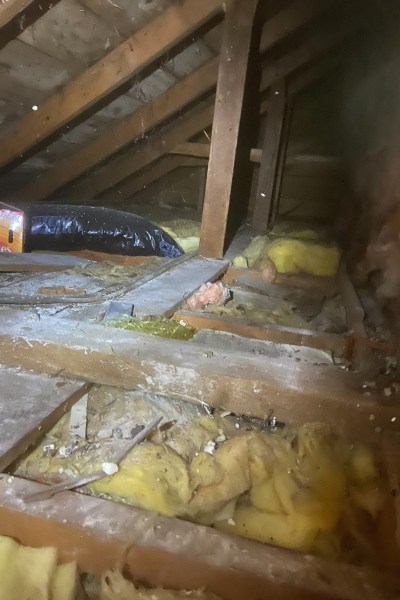
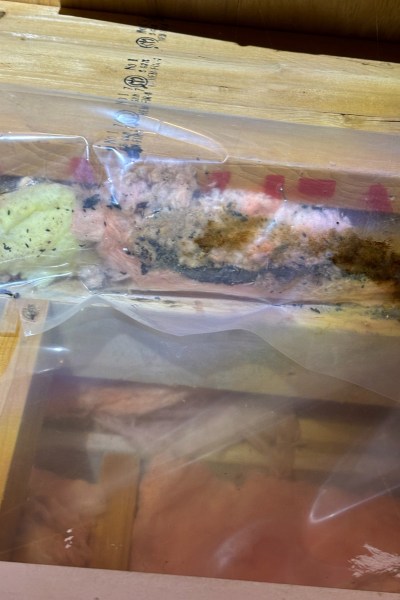
Rodent and Pest Activity
Homes on Vancouver Island are susceptible to rodent activity, causing significant issues for several reasons. First, rodents can cause physical damage to the structure by chewing through wiring, insulation, and even wood, which can lead to expensive repairs. Additionally, they can create health hazards by spreading diseases such as hantavirus, leptospirosis, and salmonella. Rodents also leave droppings and urine that can contaminate surfaces and air quality, exacerbating allergies or respiratory issues for occupants. Lastly, rodents can attract other pests, making it harder to eliminate the problem and creating a more challenging living environment overall. Addressing rodent activity promptly is important to protect both the property and the health of its inhabitants.
Ant/insect activity in homes can be more than just an annoying nuisance—it can lead to several problems that affect both the structure and the well-being of the inhabitants. Certain types of ants, like carpenter ants, can cause structural damage. Carpenter ants burrow into wood to create nests, which can weaken wooden beams, studs, and other structural elements over time.
Mold, Mildew and Rot
Mold, mildew and rot in a home can cause several issues, often related to moisture and poor ventilation. Some of the common problems include: structural damage, health concerns, unpleasant odours, aesthetic damage, pest/rodent attraction, water damage, and decreased property value.
Wood rot, caused by fungi that feed on organic materials, weakens wooden structures such as beams, joists, and flooring. If left untreated, it can compromise the integrity of the building, requiring costly repairs or even structural reinforcement to ensure safety.
Mold and mildew produce spores that can be harmful when inhaled, triggering allergic reactions, respiratory problems, or even chronic illnesses. Mold, in particular, can produce mycotoxins that pose additional health risks, especially for those with weakened immune systems or pre-existing conditions like asthma.
Both mildew and rot emit musty, damp smells that can linger and be difficult to remove. These odors are often signs of hidden moisture problems, which may need to be addressed before they worsen.
Mold and mildew can stain walls, ceilings, and other surfaces, leading to unsightly black, green, or white patches. Rot can cause wood to disfigure, warp, or crumble, affecting the appearance of flooring, trim, and even cabinetry.
Mildew and rot can attract pests, such as termites, carpenter ants, and other insects, which thrive in moist, decaying materials. This can lead to further damage to the home and an escalation of pest problems.
Homes with mold, mildew, or rot can be harder to sell, as they often signal larger moisture issues or long-term neglect. This can reduce the home’s market value or cause buyers to back out of a deal entirely.
The underlying cause of mold, mildew, and rot is often excess moisture—whether from leaks, poor ventilation, or humidity. If these moisture issues are not addressed, they can lead to ongoing water damage and a cycle of recurring problems.
Prevention is key when it comes to mold, mildew, and rot. Addressing moisture problems quickly by fixing leaks, improving ventilation, and using mold-resistant materials can help protect the home from these issues.
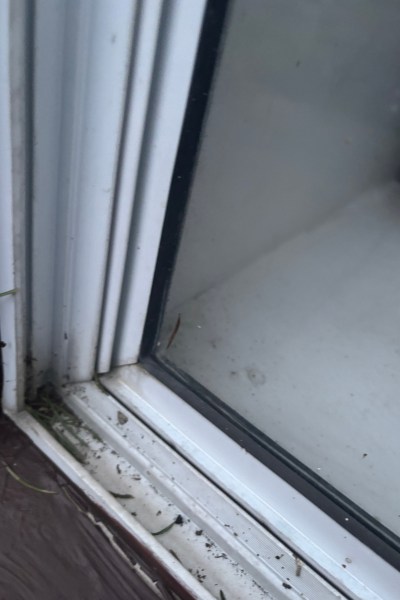
For Further Inquiries Call
250-208-0497
Call Dominion Home Inspections today to get your home inspection started in Victoria and South Vancouver Island.
